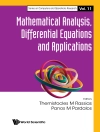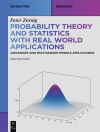The control and estimation of continuous-time/continuous-space nonlinear systems continues to be a challenging problem, and this is one of the c- tral foci of this book. A common approach is to use dynamic programming; this typically leads to solution of the control or estimation problem via the solution of a corresponding Hamilton–Jacobi (HJ) partial di?erential eq- tion (PDE). This approach has the advantage of producing the “optimal” control. (The term “optimal” has a somewhat more complex meaning in the class of H problems. However, we will freely use the term for such controllers ? throughout, and this meaning will be made more precise when it is not ob- ous. )Thus, insolvingthecontrol/estimationproblem, wewillbesolvingsome nonlinear HJ PDEs. One might note that a second focus of the book is the solution of a class of HJ PDEs whose viscosity solutions have interpretations as value functions of associated control problems. Note that we will brie?y discuss the notion of viscosity solution of a nonlinear HJ PDE, and indicate that this solution has the property that it is the correct weak solution of the PDE. By correct weak solution in this context, we mean that it is the solution that is the value function of the associated control (or estimation) problem. The viscosity solution is also the correct weak solution in many PDE classes not considered here, and references to further literature on this subject will be given.
Inhoudsopgave
Max-Plus Analysis.- Dynamic Programming and Viscosity Solutions.- Max-Plus Eigenvector Method for the Infinite Time-Horizon Problem.- Max-Plus Eigenvector Method Error Analysis.- A Semigroup Construction Method.- Curse-of-Dimensionality-Free Method.- Finite Time-Horizon Application: Nonlinear Filtering.- Mixed L?/L2 Criteria.












